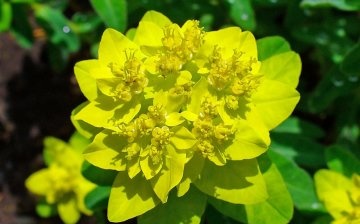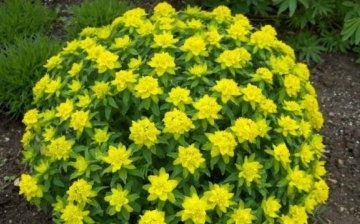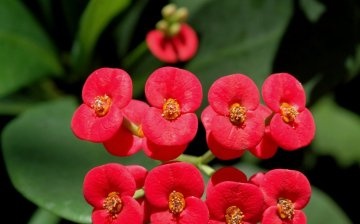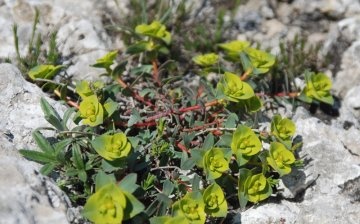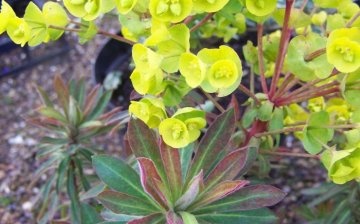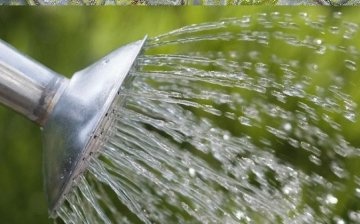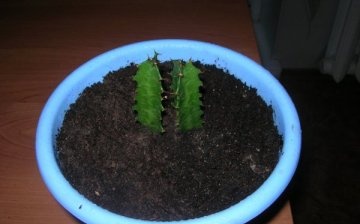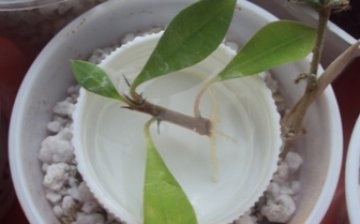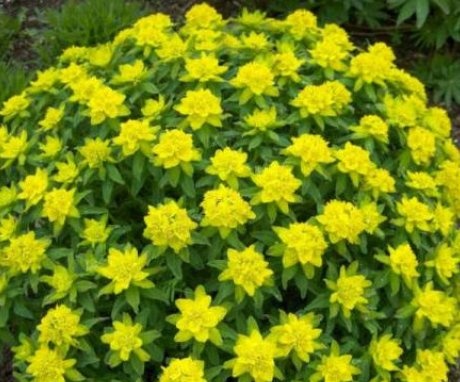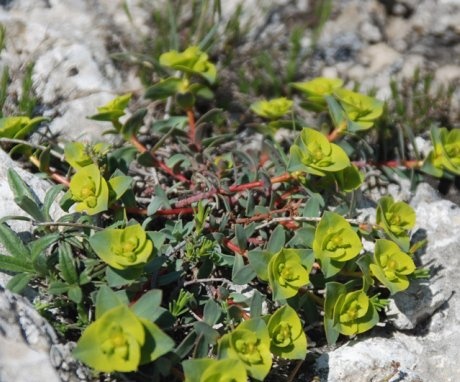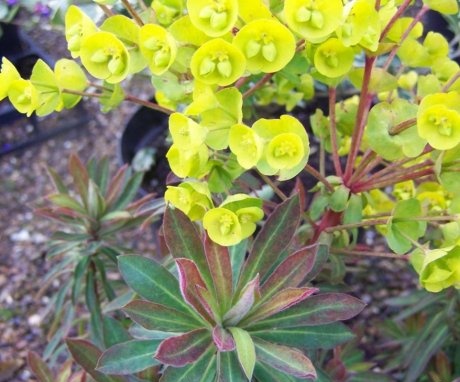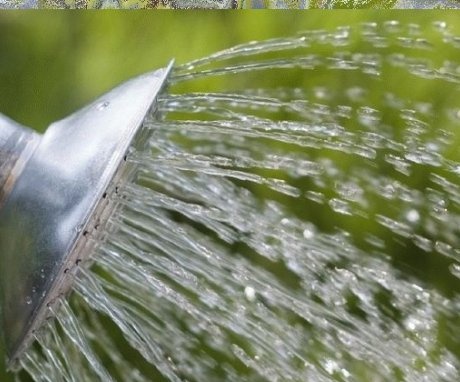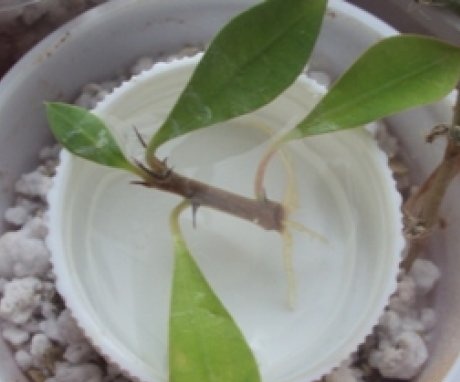Features and rules for the care of milkweed
Euphorbia has gained its popularity due to its very clumsy beauty. This plant is widely used to decorate landscapes by gardeners and designers.
Content:
Description of milkweed
Euphorbia has more than 2000 varieties... This plant can be either annual or perennial. Euphorbia belongs to the category of sprouting and rhizomatous plants. Euphorbia is also found in the form of shrubs, shrubs and even trees. The composition of absolutely all parts of milkweed contains milky juice, which explains its origin.
The leaves of this plant are arranged alternately on the stem.
Some of the milkweed species have rosettes at the end of the stem. Most often, the flowers of the plant do not have a perianth. They gather in inflorescences and are characterized by loneliness. In most species, the flowers are surrounded by a coverlet, which resembles a glass in its appearance. The fruit of this plant is a box that breaks up into three identical slices.
Types of milkweed
This plant has a large number of varieties. The most common of them are Altai, capitate, stone-loving, cypress, etc.
Altai spurge is able to germinate in very difficult conditions:
- His element is mountainous and rocky terrain.
- This plant belongs to the herbaceous category.
- Its height can be from 10 to 20 centimeters.
- This plant has very thin roots, with a diameter of about 1 to 2 millimeters.
- Leaves on this milkweed are very rare. The lower foliage is brown in color, and the upper one is rich green.
- The bolls of this plant are characterized by an useno-spherical shape.
- This type of milkweed has small flowers that are arranged in a zone.
- They are yellow-green in color.
The capitate euphorbia is characterized by:
- The presence of spreading stems, which reach a height of no more than 10 centimeters.
- The leaves are gray-green in color and ovoid. This plant has a very well-developed root system, which is able to displace some species of perennials.
- The capitate spurge belongs to the category of perennial shrubs.
- It has very dense stems on which the leaves are reddish and oblong.
- At the ends of the stems there are a large number of umbrellas, which give this plant beauty and consummation.
- This plant does very well in the shade.
- It can easily endure dry weather, but feels more comfortable in wet soils.
The name of the stone-loving milkweed speaks for itself:
- This plant prefers rocky terrain most of all.
- Lime soils are most suitable for him.
- This spurge belongs to the category of annual herbaceous plants.
- This plant is characterized by the presence of recumbent stems, which are capable of hardening at the base.
- The leaves of the plant are characterized by sessile and bluish bloom.
- Peduncles, which are located at the tops of the stems, are burgundy in color.
Cypress spurge:
- Belongs to the category of perennial shrub species.
- Its stems are densely foliated, and the stems are between 15 and 40 centimeters tall.
- This plant is characterized by the presence of leaflets, which are yellow-green in color.
- Cypress euphorbia is resistant to droughts and harsh winter conditions, making it easy to grow in a wide variety of weather conditions.
Almond spurge:
- Consists of one stem and belongs to the category of perennial plants.
- The stems of this plant are erect.
- They are able to grow stiff, which greatly facilitates milkweed's tolerance to winter conditions.
- This plant is characterized by the presence of an apical rosette, which is also capable of withstanding severe winter conditions.
- The leaves-wrappers of the flowers of this plant are yellowish-green in color.
- The leaves that are densely arranged on the stalks of the milkweed are characterized by a burgundy color.
Myrtle spurge:
- It is an original and beautiful plant that can be used to decorate any landscape design.
- It belongs to the decorative-deciduous category of plants.
- This plant has leaves that fall off for the winter and leaves that easily tolerate wintering conditions.
- This foliage has a rhombic shape.
- This plant has leaflets, which are characterized by a reddish tint.
- This plant grows and develops best in well-lit areas.
- When planting it, it is best to give preference to neutral soil, to which pebbles or fine gravel are added.
Multicolor spurge:
- Has gained a high level of popularity among gardeners due to its rather attractive appearance.
- It belongs to the category of perennial plants, which has a stem height from 50 to 70 centimeters.
- The foliage of this milkweed is green at the bottom and yellow-green at the top.
- This plant is very resistant to winter, therefore, it does not require any procedures to preserve it during this period.
Features of plant care
This plant quite unpretentious in leaving, which is why many gardeners love it. This plant is very fond of the sun, so it must be planted in well-lit places. Euphorbia belongs to the category of desert plants, so it does not like close proximity to other plants. Euphorbia does not like drafts very much, which requires planting it in unweathered places. Otherwise, the foliage may turn yellow in this plant.
Euphorbia is able to fully develop at a temperature that is as close as possible to an indicator of 25 degrees.
Watering milkweed:
- Euphorbia requires regular and moderate watering.
- For this purpose, it is best to use soft water.
- Watering during the growing season of the plant should be done no more than once a week.
- When watering, you need to use the optimal amount of water.
- The plant is negatively affected drying out of the topsoil.
- At the same time, excessive watering also negatively affects the plant.
- Excessive moisture leads to decay of the root system. Therefore, it is necessary to carry out this procedure as the soil dries up at its base.
After the end of flowering, the spurge goes through a dormant period.
At this point, it is necessary to reduce the frequency of watering to once a month. In the spring, it is necessary to prune the plant (this applies to perennial varieties of milkweed), with the help of which its correct and beautiful crown is formed.
Propagation of milkweed
There are many ways to breed milkweed.
The most commonly used are:
- Using cuttings.
- Use of leaf cuttings.
- Use of seeds.
- Division of the bush.
Propagation by cuttings:
- Produced in the spring.
- To do this, you need to take a piece of the plant 12 centimeters long.These segments should be placed in a container of warm water, which will help stop the release of milky juice. Next, you need to powder the place of the cut.
- For this purpose, ground pepper or coal is used. After this procedure, the milkweed is planted in pots.
- For this, a special soil is used, which is made from peat and sand. After that, the plant is plentifully watered and covered with a film.
- For full rooting of milkweed it is necessary to place it in a place with an air temperature not higher than 20 degrees. Rooting will take place within two weeks. After that, spurge can be planted in open ground.
For propagation of milkweed by leaf cuttings:
- Adult plants must be used. To do this, pinch off a leaf from the plant. These segments should be placed in a container of warm water, which will help stop the release of milky juice.
- Next, you need to powder the place of the cut. For this purpose, ground pepper or coal is used. The leaves must be planted in mineral wool. The cuttings are covered with a film, which is removed daily for the purpose of airing.
- Rooting of leaflets is noticed a month later. During this period, it is fashionable to plant a plant in the ground.
The easiest way is to propagate milkweed using seeds:
- The seeds are harvested from an old, full-fledged plant. For planting seeds, you must use a special soil, which includes sand and leafy earth. The land in which the seeds are placed must be watered sparingly.
- After that, the container with seeds is covered with a film, which is opened daily for the purpose of airing. Seed rise is observed 2-4 months after planting.
- When several flowers appear on the seedlings, the plant can already be planted in the ground.
A fairly easy way to reproduce milkweed is to divide the bush:
- This action is performed in early spring or early autumn. To do this, it is necessary to water the soil to soften it around the root system and carefully pull the milkweed bush out of it. The roots of this plant must be examined without fail.
- If there are damaged or rotten areas on the roots, then they must be removed.
- Next, you need to divide the bush into several parts. In this case, you should not use any cutting tools.
- The root system is very easily parted with bare hands. This division is stressful for milkweed, therefore, in the first year after planting, it develops and grows very poorly. After a year, the plant will begin to grow fully and bloom violently.
Any of the above methods can be used to propagate milkweed.
The level of plant survival depends on the type of milkweed. Caring for the milkweed is quite simple. It only needs to be planted in the necessary soil and ensure optimal watering. Correct implementation of the rules for caring for this plant will ensure its full growth and flowering. When caring for this plant it is also necessary to remember the requirements that are put forward for a certain type of milkweed.
More information can be found in the video.



